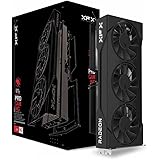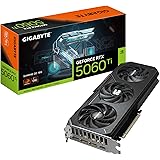This post explores the Intel i7-7700K’s place in CPU history, examining its strengths, weaknesses, and the market upheaval caused by AMD’s Ryzen processors. It will analyze the chip’s specifications, performance, and ultimately, its legacy in the face of rapidly changing technology.

The Pre-Ryzen Landscape: Intel’s Dominance
Before 2017, Intel enjoyed a period of near unchallenged dominance in the CPU market. For almost a decade, their processors consistently outperformed AMD’s offerings, securing their position as the go-to choice for gamers, content creators, and general consumers alike. This dominance allowed Intel to dictate pricing and innovate at a pace that suited their strategic goals. Consumers largely accepted this status quo, with few viable alternatives to Intel’s high-performance CPUs. This context is crucial to understanding the reception and subsequent fate of the i7-7700K.
The i7-7700K, released in January 2017, was a product of this era. Based on the Kaby Lake microarchitecture, it represented a refinement of Intel’s established design. It boasted a base clock speed of 4. 2 GHz and a turbo boost up to 4. 5 GHz. With four cores and eight threads, it was a strong performer in gaming and general desktop tasks. The 7700K quickly became a popular choice for gamers seeking high frame rates and responsive performance. Its strong single-core performance made it particularly well-suited for older games and applications that didn’t fully utilize multiple cores.
The Ryzen Earthquake: A Paradigm Shift
In March 2017, AMD launched its Ryzen series of processors, spearheaded by the Ryzen 7 lineup. This release marked a turning point in the CPU market, disrupting Intel’s dominance and fundamentally altering consumer expectations. Ryzen offered significantly more cores and threads at competitive price points. The Ryzen 7 1700, for instance, offered eight cores and sixteen threads at a price comparable to the i7-7700K.
This core count advantage proved to be a game-changer, particularly in multithreaded workloads such as video editing, 3D rendering, and content creation. While the i7-7700K still held a slight edge in some gaming scenarios due to its higher clock speeds, the Ryzen processors offered superior performance in tasks that could leverage multiple cores. This forced consumers to reconsider their priorities and evaluate the trade-offs between single-core speed and multi-core performance.
The Ryzen launch had a ripple effect throughout the industry. It demonstrated that AMD was once again a serious competitor in the high-performance CPU market. This competition forced Intel to respond, leading to increased innovation and more aggressive pricing strategies. The impact of Ryzen extended beyond just performance, it also affected consumer perception and expectations, ushering in an era where multi-core performance became a key consideration for CPU purchases.
i7-7700K: Specifications and Performance
The Intel i7-7700K features a 14nm Kaby Lake architecture, a base clock speed of 4. 2 GHz, and a turbo boost of 4. 5 GHz. It has four cores and eight threads with 8 MB of SmartCache and an 8 GT/s DMI3 bus speed. Its thermal design power (TDP) is rated at 91W, reflecting its power consumption under load.
While the i7-7700K was a capable performer in its time, its limitations became apparent with the rise of Ryzen. Its four-core, eight-thread configuration struggled to keep pace with the increasing demands of modern applications and games, particularly those optimized for multi-core processors. The lack of cores also impacted its ability to handle background tasks while gaming or streaming. As games became more complex and utilized more cores, the i7-7700K began to show its age.
Mining Performance: A Fleeting Opportunity
The i7-7700K, like other CPUs, could be used for cryptocurrency mining. However, its performance in mining was relatively limited compared to dedicated mining hardware such as GPUs or ASICs. Its mining hash rate varied depending on the algorithm used. For example, it achieved approximately 1. 48 MH/s on LYRA2RE, 0. 8 KH/s on HODL, and 0. 36 kH/s on Cryptonight. Its Equihash rate was around 31. 5 kH/s.
While mining on the i7-7700K was possible, its profitability was marginal, especially considering its power consumption of around 100 Watts per hour. Mining calculators like Betterhash indicated that the i7-7700K could generate a small amount of revenue. However, after accounting for electricity costs, the profit margins were often slim or even negative, depending on the electricity prices in a given region.
Given the low return on investment and the availability of more efficient mining hardware, using the i7-7700K for dedicated mining was generally not a worthwhile endeavour. It might be acceptable for casual, “on the side” mining as a hobby, but not as a primary source of income. Investing in GPUs, ASICs, or newer, more efficient CPUs would yield better results for serious mining operations.
Based on data from resources like Hashrate. no, the i7-7700K yields a relatively small amount of revenue when mining certain coins using RandomX. The estimated revenue is approximately US$0. 04 per day before electricity costs. After accounting for electricity costs, the profit is often minimal or even negative, especially in regions with moderate to high electricity prices.
To illustrate, consider a scenario where the electricity cost is $0. 15 per kilowatt-hour (kWh). The i7-7700K consumes around 91 watts, or 0. 091 kilowatts. Over 24 hours, the processor consumes 0. 091 kW 24 hours = 2. 184 kWh. The daily electricity cost would be 2. 184 kWh $0. 15/kWh = $0. 3276. Given the estimated revenue of $0. 04 per day, the net loss would be $0. 2876 per day.
The return on investment (ROI) for mining with the i7-7700K is a crucial consideration. The ROI is determined by dividing the initial cost of the hardware by the net profit generated over a period of time. Given the low profitability and potential net losses, the ROI for the i7-7700K is very long.
For example, if the i7-7700K and the necessary components (motherboard, RAM, power supply) cost $300, and the daily loss is $0. 2876, it would take approximately 1043 days to recoup the initial investment. This does not account for potential hardware failures or fluctuations in cryptocurrency prices and mining difficulty.
There are different perspectives on the viability of mining with the i7-7700K. For individuals who already own the processor and have access to very cheap electricity, mining on the side as a hobby or to earn some extra income may be acceptable. However, purchasing the i7-7700K specifically for mining purposes is generally not recommended due to its low performance and efficiency compared to other options.
The Legacy of the i7-7700K
The i7-7700K occupies a unique place in CPU history. It represents the culmination of Intel’s dominance before the Ryzen disruption. It was a solid gaming chip at launch, but it was quickly overshadowed by AMD’s Ryzen processors. While the i7-7700K remained a capable performer for some time, its limited core count and lack of significant architectural improvements left it struggling to keep up with newer CPUs.
Despite its eventual obsolescence, the i7-7700K played a role in shaping the CPU landscape. Its popularity highlighted the importance of single-core performance for gaming. The 7700K indirectly contributed to the shift towards multi-core processors by exposing the limitations of a four-core CPU in the face of demanding workloads. It served as a reminder that technological advancements are inevitable and that even the most dominant players can be challenged.
The Impact on Intel and the Market
The Ryzen launch forced Intel to respond and adapt. Intel introduced processors with higher core counts, such as the i7-8700K. This marked a significant departure from their previous strategy of incremental updates. The increased competition also led to more aggressive pricing. These changes ultimately benefitted consumers by providing them with more choices and better performance at competitive prices.
The Ryzen revolution also impacted the broader PC industry. Motherboard manufacturers, memory producers, and other component suppliers adapted to the changing market dynamics. The rise of multi-core processors spurred innovation in software development. Game developers began to optimize their titles for multiple cores and threads, further enhancing the performance of Ryzen processors and other multi-core CPUs.
The CPU market continues to evolve at a rapid pace. AMD and Intel are locked in a constant battle for dominance, with each company pushing the boundaries of CPU technology. New architectures, manufacturing processes, and features are constantly being developed. These advancements promise to deliver even greater performance and efficiency in the years to come.
The trend towards multi-core processors is likely to continue, as applications and games become increasingly demanding and complex. The integration of AI and machine learning into CPUs is also a growing trend, with dedicated hardware accelerators being incorporated to improve performance in AI-related tasks.

The Intel i7-7700K stands as a symbol of a specific era in CPU history. It embodies Intel’s pre-Ryzen dominance, highlighting the chip’s strengths and eventual limitations. While initially a strong gaming chip, it was quickly overshadowed by AMD’s Ryzen processors. The Ryzen release had a profound impact on the CPU market, forcing Intel to innovate and ultimately benefiting consumers. The i7-7700K serves as a reminder of the dynamic nature of the technology industry and the importance of competition in driving innovation. It underscores the shift towards multi-core processors and its legacy in the story of CPU evolution.
Summary of the Intel i7-7700K Processor Specifications :
- CPU Speed : 3.20 GHz
- Cores : 4
- Threads : 8
- Cache : 8 MB SmartCache
- Bus Speed : 8 GT/s DMI3
- Processor Base Frequency : 4.20 GHz
- Max Turbo Frequency : 4.50 GHz
Summary of the Intel i7-7700K Processor Mining Hashrate :
- LYRA2RE Mining Hashrate : 1.48 MH/s
- HODL Mining Hashrate : 0.8 KH/s
- Cryptonight [ (XMR) & (XDN) ] Mining Hashrate : 0.36 kH/s
- Equihash [ (ZEC – ZEN – ZCL) & (BTG) & (KMD) & (HUSH) ] Mining Hashrate : 31.5 kH/s
Power Consumption : 100 Watts/Per Hour.




